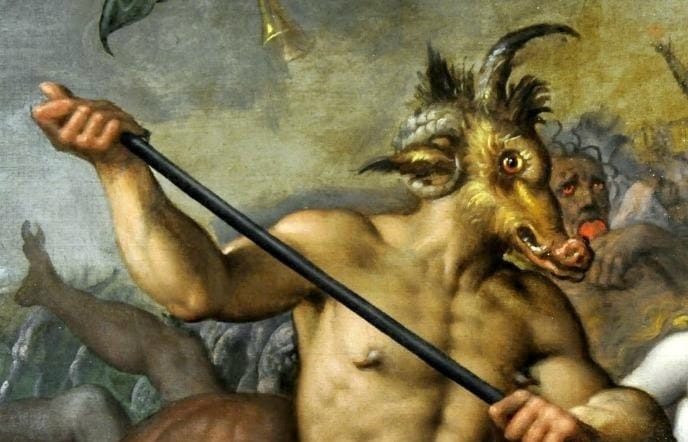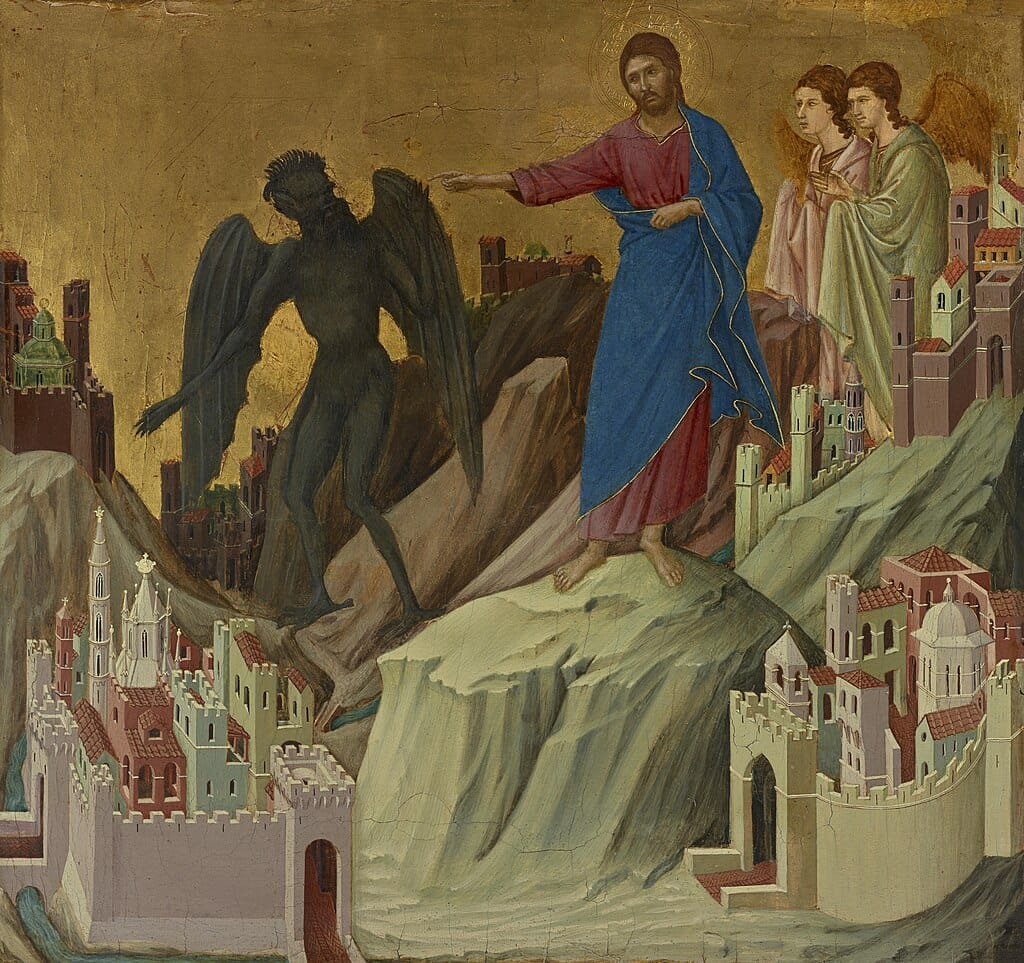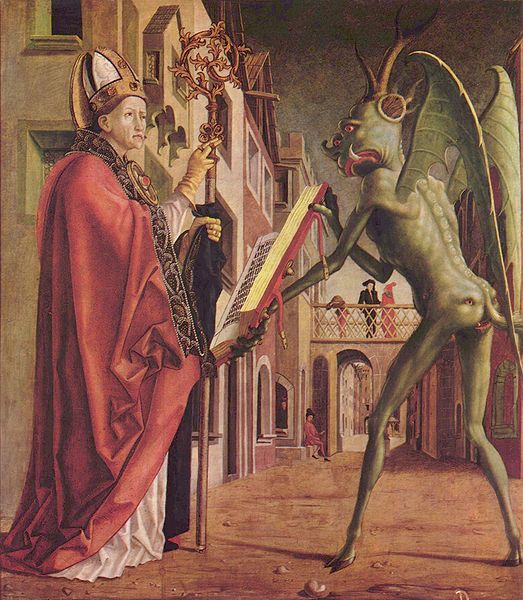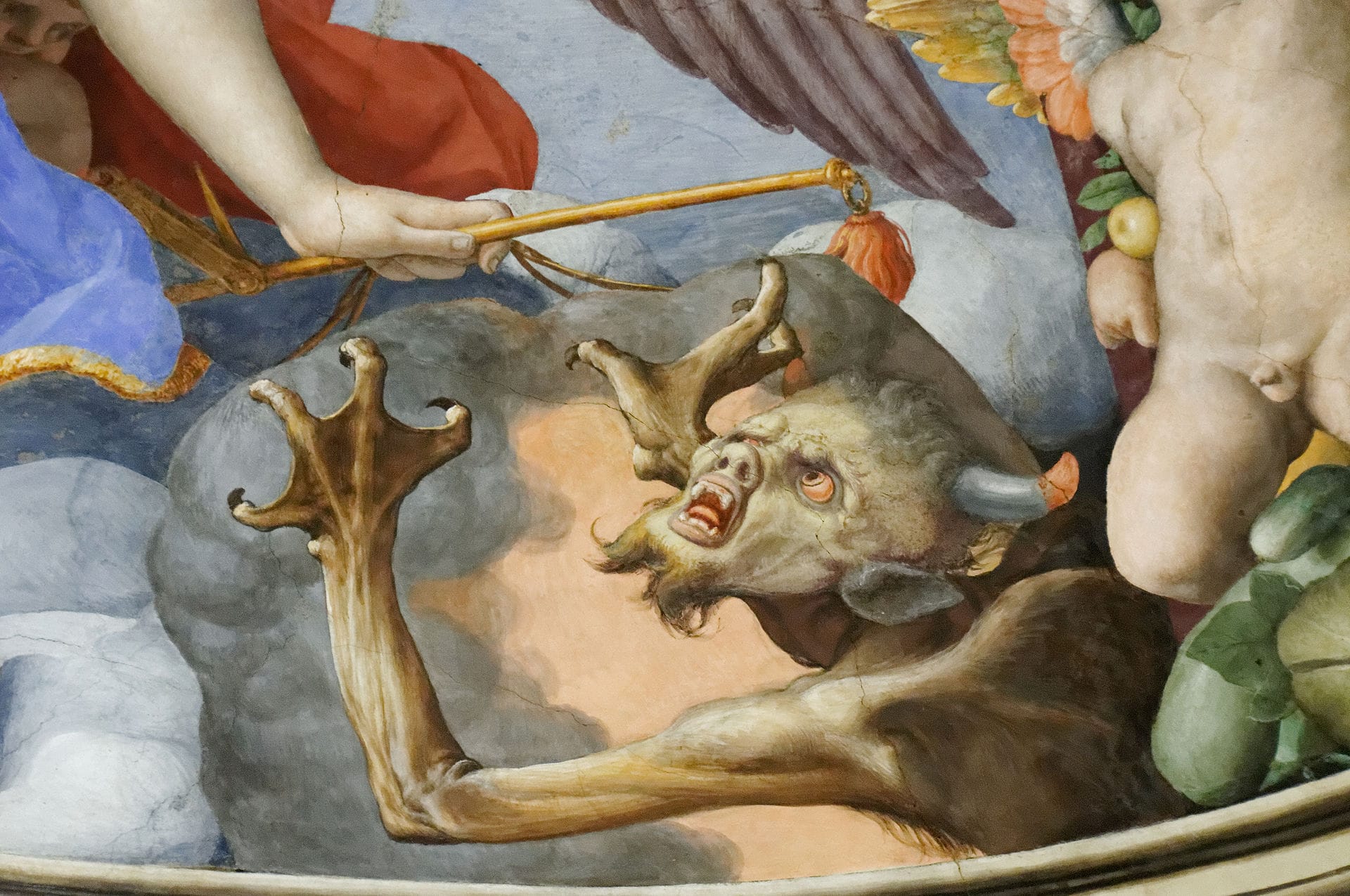The Devil

The Devil only emerged as a strong character in his own right in the late medieval period - the late 1300's or early 1400's in northern Italy when he took on a garish appearance. (He has his own lineage separate from Satan; for another image here.) Below is Duccio's The Temptation on the Mount, part of his Maestà altarpieces in Siena, painted between 1308–1311, where the Devil really is a bit anonymous and defensive and it plays into racist tropes.

The altarpiece below from 1471-75 shows the Devil with Saint Wolfgang, Bishop of Regensburg (Bavaria), a 10th century figure, and here he is much more aggressive. Legend has it that Wolfgang persuaded the Devil to help with building a church by promising him the soul of the first living creature to enter the church; however he went away empty-handed because it turned out to be a wolf. Variations on this legend go all the way back to Theophilus of Adana (a contemporary of Justinian and Theodora), who sold his soul but won it back with the intercession of the Virgin Mary. This altarpiece, by Michael Pacher, was from the town of Saint Wolfgang, Austria, but is now in Munich.

What is interesting in light of current debates about DNA and cloning, is the constant depictions of the Devil and other monsters in the 16th and 17th centuries as mutant creatures. The image up top is a detail from Flemish painter Jacob de Backer - Day of Judgment (1580's). Below is a detail from Bronzino's frescoes in the private chapel of Eleanora of Toledo, Duchess of Florence (1540's).

However, there is an alternative view: the Devil only offers us what we already have. He is not Satan but Pan or Dionysius, the pagan god of pleasure and abandon. But this figure was pushed aside by Christianity till Nietzsche and others helped bring him back.
When Thomas Mann came to write Doctor Faustus (1947), his Faust character, Adrian Leverkuhn, somewhat recalls Nietzsche: he makes a pact with the Devil, willfully contracts syphilis so that he can produce inspired music, and finally goes insane. His Devil character is described this way:
He is a rather scrawny man, not very tall and even shorter than I am, wearing a casual beret pulled down over on ear, while on the other side reddish hair sprouts from his temple. He has reddish eyelashes, flushed eyes, and an ashen face, and the tip of his nose curves downwards a little. Over a stitched shirt with diagonal stripes he wears a check jacket, with sleeves that are too short, from which stubby-fingered hands emerge. His trousers are too tight and his shoes so beaten up that they can no longer be cleaned. A pimp, a parasite, with the voice of a theatre actor.
Neil Gaiman took the same approach with Odin in American Gods.
